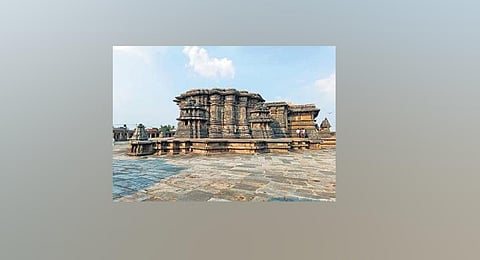

BENGALURU / HASSAN: The famous Hoysala-era temples of Belur, Halebid and Somanathapura have made it to the World Heritage list that was announced late on Monday night. The World Heritage Convention of the United Nations Educational, Scientific and Cultural Organisations (UNESCO) announced the list. The three sculptural wonders in addition to Pattadakal, Hampi and Western Ghats are already part of the prestigious list from Karnataka.
On Monday night, Chief Minister Siddaramaiah posted on social media site X: “It’s a pleasure and pride that the Hoysala temples of Karnataka have been added to the World Heritage Sites list. The government is working to provide world-class infrastructure and security to tourists visiting the destinations.”
Tourism Minister HK Patil termed it good news and said the tourist footfall at these temples will now increase, besides paving the way for the creation of more employment opportunities for local residents. A senior official from the Archaeological Survey of India (ASI) said, “The inclusion of the sites will strengthen conservation efforts.
Now the challenge is to ensure that the sites are well protected and well maintained. Coordination with all agencies will be critical.” Meera Iyer, Convener, Indian National Trust for Art and Cultural Heritage (Intach) -- which prepared the draft list, said their proposal had highlighted that the sites are a product of human genius and are unique.
“In these temples and sites, we can see an exchange of ideas being shared with other sites across India. They are unique and explain about that period,” she said. For a place to be declared a World Heritage site, it should meet at least one of the 10 criteria listed by Unesco. In the case of these Hoysala temples, there were many unique features, including the management and maintenance done by ASI and committees formed by the government, she said.
These sacred ensembles have been on Unesco’s tentative list since 2014. They were finalised as India’s nomination for consideration following the recommendation by the Union government in September 2023. Sudha Murty, former president of the state tourism task force under the previous BJP government, visited Belur and Halebid with the Unesco team one-and-a-half years ago and explained to them the beautiful and intricate Hoysala architecture. Vishal V Sharma, a permanent representative of India to Unesco, too had formally submitted the nomination to the Unesco director.
ON A PEDESTAL
The Channakeshava temple of Belur, Hoysaleshwara temple of Halebid and Keshava temple at Somanathapura are constructed on star-shaped platforms and are called Ekakoota (single sanctum sanctorum), Dweekoota (double) and Trikoota (triple) temples, respectively. The carvings in and around the temples reveal the story of Ramayana and Mahabharata. The temples also have unique Shilabalikas and images of Lord Shiva and Vishnu are etched on the walls.